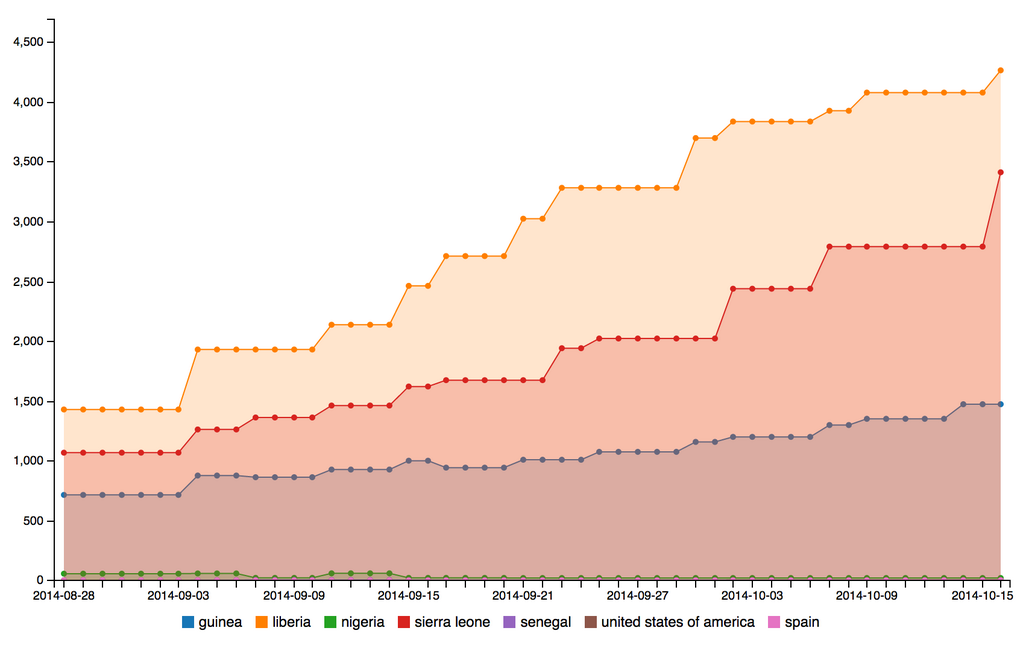
The Ebola epidemic has finally captured international attention. Coverage of Ebola was minimal when the disease was confined to West Africa, but a small number of recent cases in the US and Europe have sparked frantic, hysterical reporting from western media outlets and subsequent public panic. In light of this, it's important to keep the threat in perspective. For example, the above chart shows the number of confirmed and suspected cases in every country touched by the virus.
This
World Health Organization data, provided by the
Humanitarian Data Exchange and visualized using analysis tools we're developing at
CrisisNET, confirms statements by the
Centers for Disease Control reassuring people in the US and Europe that their chances of contracting Ebola are vanishingly small (in fact, to date all known cases outside of West Africa have been health workers directly involved in treating Ebola patients).
That said, the chart above also clearly shows that Ebola is on the rise in Liberia, Guinea and Sierre Leon, and represents an urgent and ongoing humanitarian crisis. Consequently we've been following the spread of the disease in West Africa since
early this summer.
For example, partnering with
Cédric Moro and using the CrisisNET platform, we collected
reports of suspected and confirmed Ebola cases from social media, traditional publications and information posted on public websites.
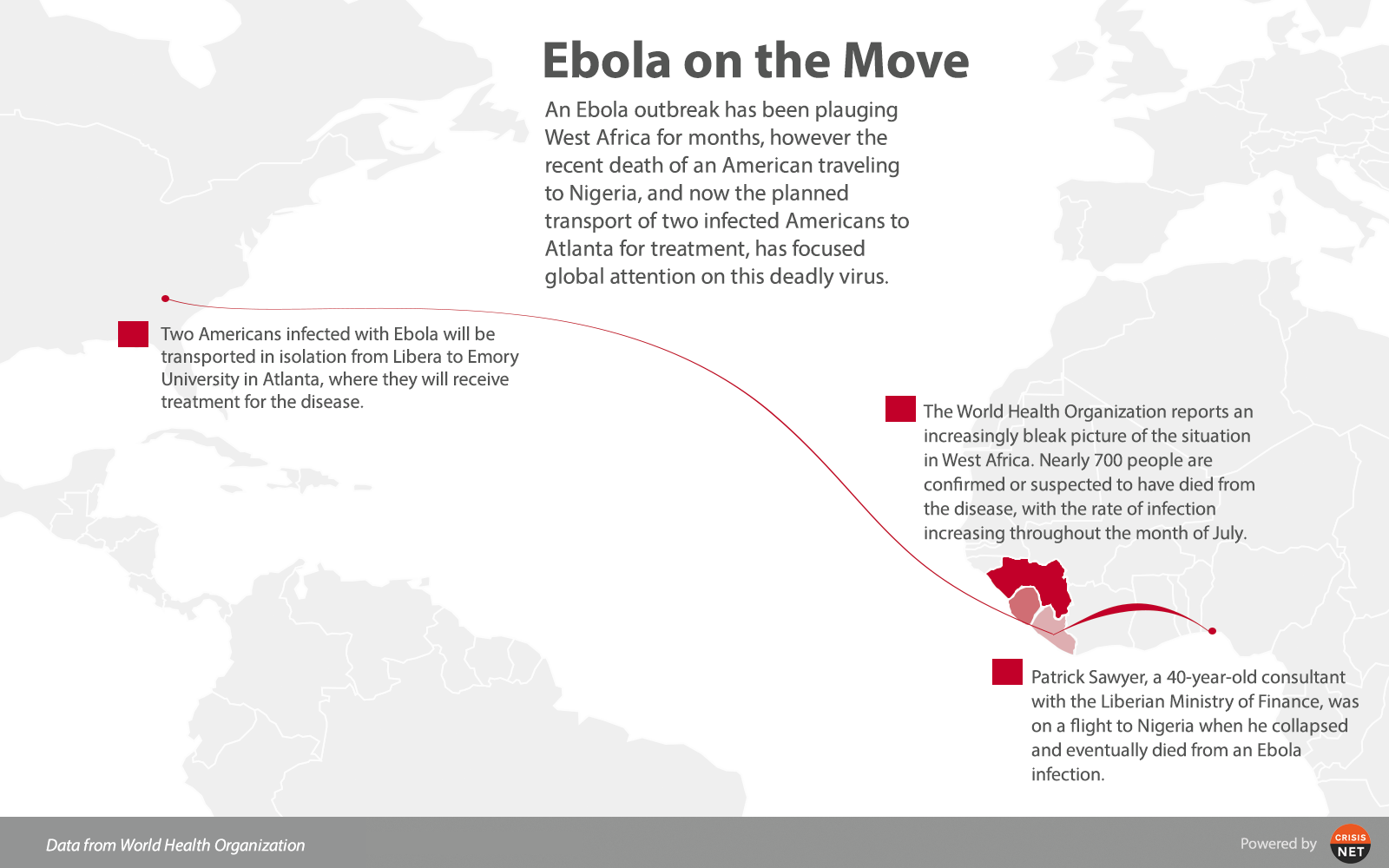
Cedric also continues to do excellent work reporting on the virus, primarily through
his Twitter account, and the data he helped us collect was recently used by
World Policy Journal to map the disease in both
their print and
online editions.
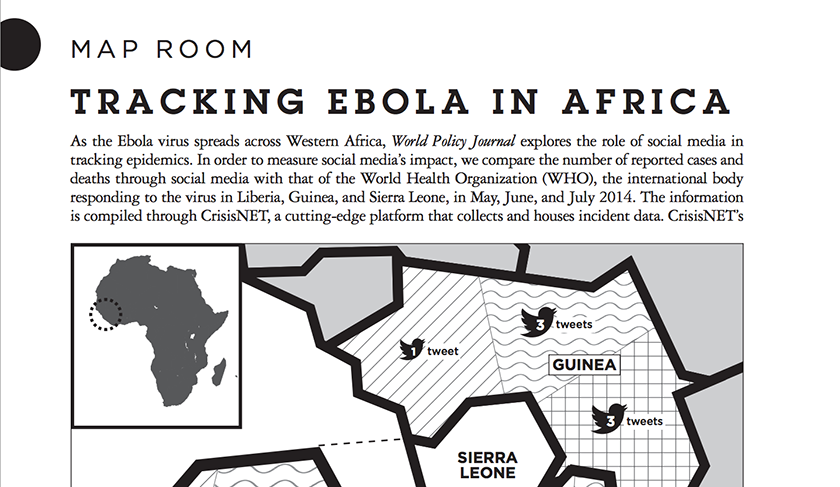 Liberia Early Warning Response Network
Liberia Early Warning Response Network (LERN), an Ushahidi instance deployed to monitor crisis indicators, has also proven to be an invaluable resource in gathering crowdsourced information about the location of known and suspected Ebola cases.
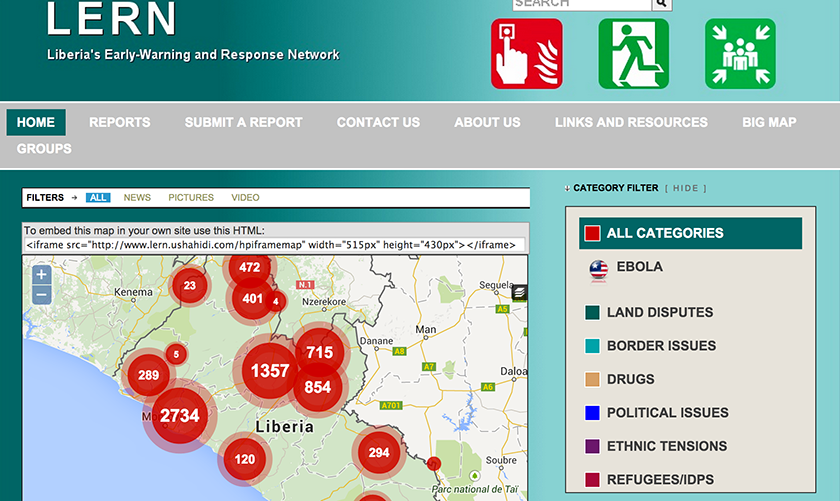
This public resource publishes daily updates, and the raw data generated by the platform was used to generate a narrative visualization, originally
posted on the CrisisNET blog in August.
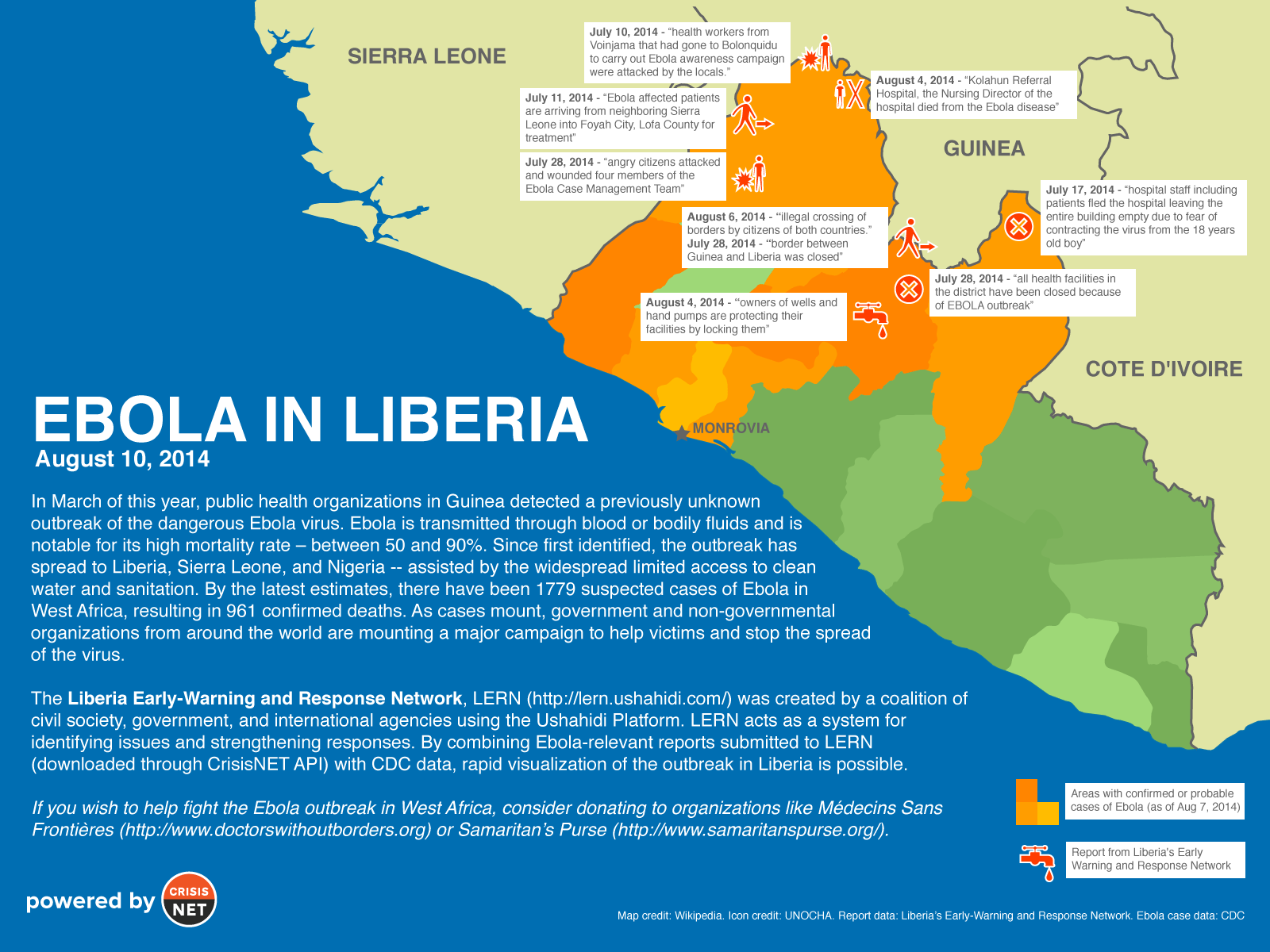
We'll likely
only see a handful of Ebola cases in the US and Europe, and the western public will inevitably lose interest in the epidemic. In West Africa it's a different story. Some projections suggest the disease won't be under control until December, at which point the WHO is
predicting tens of thousands of cases per week. As many as
1.4 million people have or will contract the virus by January, which -- even though
those numbers are debatable -- represents an enormous toll on families, communities and the region's already fragile healthcare infrastructure.
So don't let up. It's essential that nations around the world continue to attack Ebola and support the most affected countries.
 The Ebola epidemic has finally captured international attention. Coverage of Ebola was minimal when the disease was confined to West Africa, but a small number of recent cases in the US and Europe have sparked frantic, hysterical reporting from western media outlets and subsequent public panic. In light of this, it's important to keep the threat in perspective. For example, the above chart shows the number of confirmed and suspected cases in every country touched by the virus.
This World Health Organization data, provided by the Humanitarian Data Exchange and visualized using analysis tools we're developing at CrisisNET, confirms statements by the Centers for Disease Control reassuring people in the US and Europe that their chances of contracting Ebola are vanishingly small (in fact, to date all known cases outside of West Africa have been health workers directly involved in treating Ebola patients).
That said, the chart above also clearly shows that Ebola is on the rise in Liberia, Guinea and Sierre Leon, and represents an urgent and ongoing humanitarian crisis. Consequently we've been following the spread of the disease in West Africa since early this summer.
For example, partnering with Cédric Moro and using the CrisisNET platform, we collected reports of suspected and confirmed Ebola cases from social media, traditional publications and information posted on public websites.
The Ebola epidemic has finally captured international attention. Coverage of Ebola was minimal when the disease was confined to West Africa, but a small number of recent cases in the US and Europe have sparked frantic, hysterical reporting from western media outlets and subsequent public panic. In light of this, it's important to keep the threat in perspective. For example, the above chart shows the number of confirmed and suspected cases in every country touched by the virus.
This World Health Organization data, provided by the Humanitarian Data Exchange and visualized using analysis tools we're developing at CrisisNET, confirms statements by the Centers for Disease Control reassuring people in the US and Europe that their chances of contracting Ebola are vanishingly small (in fact, to date all known cases outside of West Africa have been health workers directly involved in treating Ebola patients).
That said, the chart above also clearly shows that Ebola is on the rise in Liberia, Guinea and Sierre Leon, and represents an urgent and ongoing humanitarian crisis. Consequently we've been following the spread of the disease in West Africa since early this summer.
For example, partnering with Cédric Moro and using the CrisisNET platform, we collected reports of suspected and confirmed Ebola cases from social media, traditional publications and information posted on public websites.
 Cedric also continues to do excellent work reporting on the virus, primarily through his Twitter account, and the data he helped us collect was recently used by World Policy Journal to map the disease in both their print and online editions.
Cedric also continues to do excellent work reporting on the virus, primarily through his Twitter account, and the data he helped us collect was recently used by World Policy Journal to map the disease in both their print and online editions.
 Liberia Early Warning Response Network (LERN), an Ushahidi instance deployed to monitor crisis indicators, has also proven to be an invaluable resource in gathering crowdsourced information about the location of known and suspected Ebola cases.
Liberia Early Warning Response Network (LERN), an Ushahidi instance deployed to monitor crisis indicators, has also proven to be an invaluable resource in gathering crowdsourced information about the location of known and suspected Ebola cases.
 This public resource publishes daily updates, and the raw data generated by the platform was used to generate a narrative visualization, originally posted on the CrisisNET blog in August.
This public resource publishes daily updates, and the raw data generated by the platform was used to generate a narrative visualization, originally posted on the CrisisNET blog in August.
 We'll likely only see a handful of Ebola cases in the US and Europe, and the western public will inevitably lose interest in the epidemic. In West Africa it's a different story. Some projections suggest the disease won't be under control until December, at which point the WHO is predicting tens of thousands of cases per week. As many as 1.4 million people have or will contract the virus by January, which -- even though those numbers are debatable -- represents an enormous toll on families, communities and the region's already fragile healthcare infrastructure.
So don't let up. It's essential that nations around the world continue to attack Ebola and support the most affected countries.
We'll likely only see a handful of Ebola cases in the US and Europe, and the western public will inevitably lose interest in the epidemic. In West Africa it's a different story. Some projections suggest the disease won't be under control until December, at which point the WHO is predicting tens of thousands of cases per week. As many as 1.4 million people have or will contract the virus by January, which -- even though those numbers are debatable -- represents an enormous toll on families, communities and the region's already fragile healthcare infrastructure.
So don't let up. It's essential that nations around the world continue to attack Ebola and support the most affected countries.